Daragh Ó Conchúir is an award-winning freelance writer, author and broadcaster, who has been contributing to mainstream and trade media for more than 30 years, while also serving in editorial roles in that time, including at present, as editor of the Irish Racing Yearbook.
Many strands but one common thread
Ballyhane’s supremo, Joe Foley is used to juggling several balls at once but he never tires of the fun and the buzz he gets from working in the industry. Daragh Ó Conchúir reports.
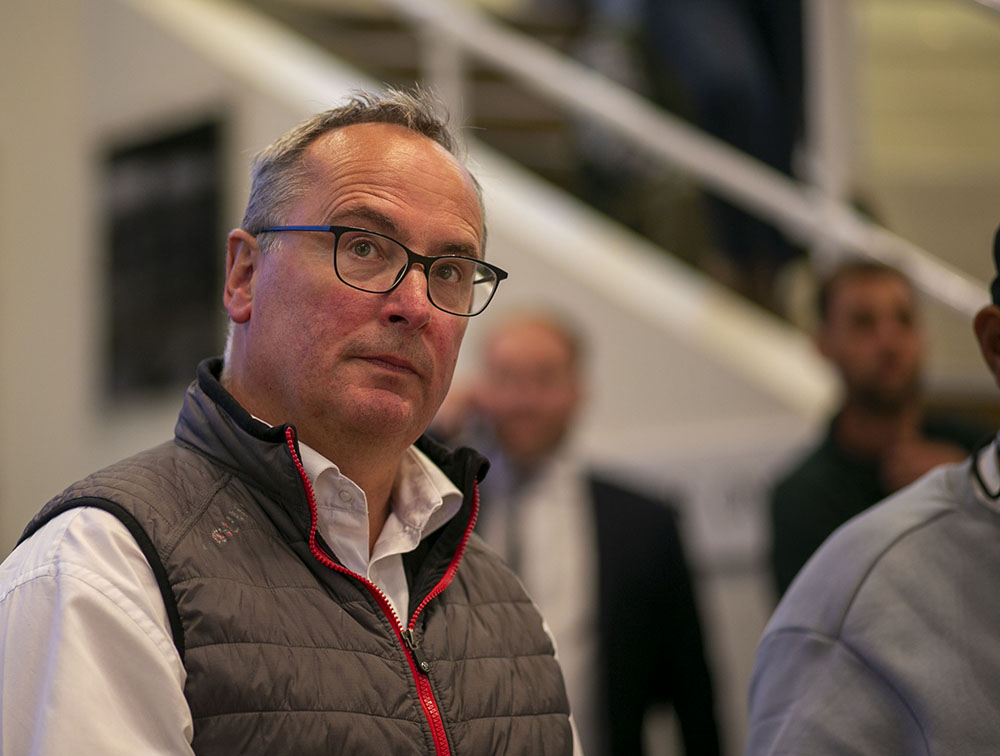
As we meet, Joe Foley’s thoughts are on the Breeders’ Cup. When you have as many roles in the sport and industry of thoroughbred horse racing as he does, you have to be able to compartmentalise however.
So, while as manager of the interests of Steve Parkin’s Clipper Logistics most of his thoughts in the final days of October are on Dramatised putting his best foot forward at Keeneland, the boss of Ballyhane Stud has no problem switching lanes to focus on his stallions. And that’s even though there is a good chance that issues relating to his work with the ITBA and Irish EBF are whirling around somewhere in that brain, not to mention a host of other schemes such as the Irish Champions Weekend innovation that germinated therein and evolved in conversations with his sparring partner and close friend John O’Connor of Ballylinch Stud before becoming reality.
Then there are the sales: selling stock or buying it to race or pinhook, and the consideration of what to do with his band of broodmares. Plus making plans for Parkin’s 2023 crop of juveniles, many of them pre-trained at Ballyhane by Foley’s wife, Jane.
Dramatised ran his heart out in the Juvenile Turf Sprint, holding the lead until the final 40 yards or so, the Karl Burke-trained son of Showcasing finishing a gallant runner-up. One could imagine Foley being momentarily gutted, and then scraping himself up off the floor to attack the next item on his endless agenda of tasks and interests. You’ll struggle to find a more passionate man about what he does – all the things he does – which is why he does them.
This is an industry with a sport attached to it.
“This is an industry with a sport attached to it,” he says. “Most people work in other industries and, with the greatest of respect to them, it’s a little bit boring. They have to go home at five o’clock on a Friday evening and get their buzz elsewhere, whereas we work in an industry where we get the fun and the buzz within it!”
For him, there is a rush from introducing a new stallion to the market at his Leighlinbridge, Co. Carlow farm. Clearly, in his judgement, he has made the right call, but there are no certainties in the bloodstock game. For many, that would be terrifying, but when history says you get it right most of the time, it is probably easier to stave off fear.
“It’s exciting, that’s what we’re all in the game for! You throw the ball up and see how it lands, and you do your best to give the horses the best chance you can. We’ve been lucky here with stallions in the past, and hopefully we will be again in the future. It’s a very challenging business obviously, but it’s very exciting and a very fun industry to be involved in. Terrifying is not the word – maybe challenging!”
Daragh: Last year was a good one for Ballyhane.
Joe: Yes, it’s been a good, buoyant year. The stallions have done well in the covering barn; they’ve done well on the track and they’ve done well in the sales ring, so it’s been a solid one for the horses.
Daragh: That’s the holy trinity.
Joe: Yes it is. When you have a stallion that’s popular and makes money for you, does his business in the covering sheds but then spins back that money for those who use him in the sales ring, then you survive for another year. But obviously it’s important that the stock does well on the racetrack. All three go hand in hand.
Daragh: Does that mean you have to be imaginative when it comes to choosing stallions? What do you look for?
Joe: A lot of the stallion prospects are in the hands of people who have their own stallion operations and therefore wouldn’t be for sale. So yeah, sometimes you have to get creative. But it all boils down to the one thing: you stand a stallion who you think is going to be good, that’s where you’ve got to start.
Daragh: Is that his pedigree, conformation, form or a combination of all of the above?
Joe: That’s a blended combination. You start with raceability, which encompasses acceleration, temperament – very important – and that brings you to his actual ability. And then you’re into conformation, which is important, because you’re hoping they’ll give their progeny their own stamp. Then pedigree, obviously. There’s a strength in pedigree, but pedigrees can take a little bit of sifting through.
There’s a lot of hype around certain pedigrees, certain sire lines. If you analyse deeply, there are horses out there from non-fashionable sire lines that have become very talented stallions, so it’s an area that has become maybe a little bit over-hyped. You can fish in a pool there that other people mightn’t if you avoid the sire line hype. One recent example is Havana Grey, who has done great work for Whitsbury. Good racehorse, good acceleration, good honest temperament. By Havana Gold, by Teofilo, not a sire line that some people felt was hot at the time, but the combination of everything else that made up Havana Grey has made him a very promising stallion.
Good race horses can overcome what the fashion police think.
Daragh: So there is value in the market if you think for yourself?
Joe: I think so and hope so. History has proved that some stallions have been a little bit cold in the market with breeders at the start but were good racehorses; that’s what you start with. Sometimes good racehorses can overcome what the fashion police think is not, in inverted commas, “a good racing pedigree”.
Daragh: Is having a good broodmare band important then to show the market what it has missed out on? Because the first couple of years are crucial, aren’t they?
Joe: Yes, they are, so it is important to have a bunch of mares to support these horses, both in the sales ring and on the track. You can make good money and breed good horses from breeding your own.
Daragh: You support them as a buyer at the sales too.
Joe: In the sales ring you’ll lean towards horses that were stocked by your own sire. I enjoy buying foals and yearlings, and I enjoy buying stock by my own stallions. I picked up two Grade 1 winners by Dandy Man (River Boyne and Peniaphobia). We pinhooked (Group 2 winner) The Lir Jet by Prince of Lir here and some of the top Elzaams as well, so it’s important to, one, support your sires, and two, bring them to the market place and get them into the system.
Daragh: Dandy Man is rising 20. He’s by far the top sire of sprinters in Europe in terms of winners and has a good winners to runners and black type winners to runners ratio.
Joe: He keeps doing it year-in and year-out, bless him. He’s been a good sire; he’s a king in here. We appreciate what he’s done for us and for the people who’ve used him over the years. He’s been a very solid stallion, both in the sales ring and more importantly on the racetrack. He’s done it again this year; he’s got Rocket Rodney, a very fast two year old for George Scott, and he’s got a very smart colt with Ger Lyons called Hellsing. He just keeps providing these good Stakes horses. And, as a perennial in the top 20 or the top 10 in the various sire lists around Europe, he’s always the cheapest nomination fee in those boxes, so he has provided great service to people down the years.
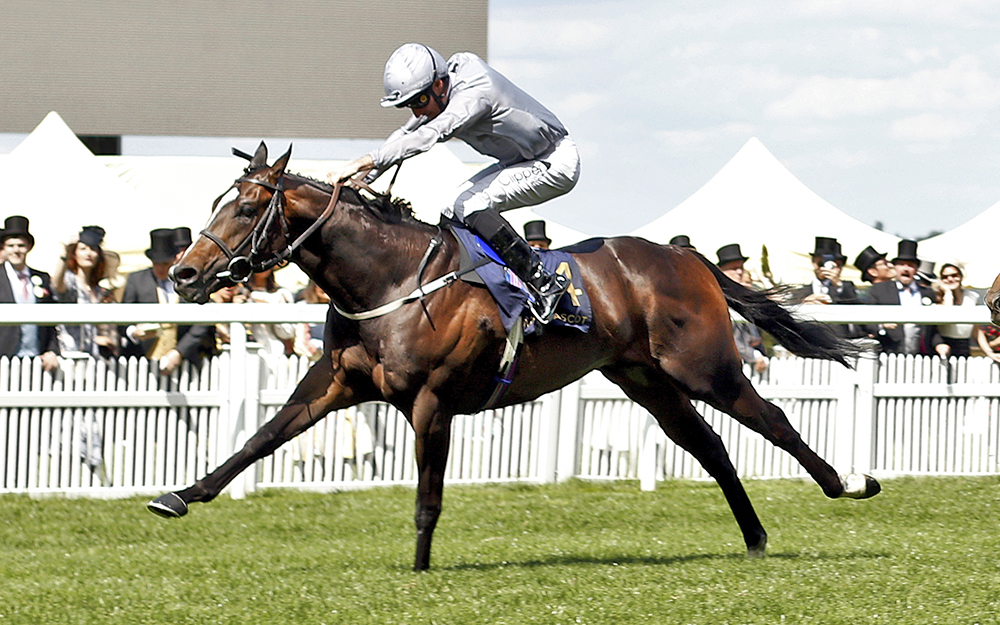
Space Traveller, who retires to Ballyhane in 2023 after a successful racing career in Europe and the USA.
Daragh: With an eye to the future, you have brought in younger stallions.
Joe: We’re adding a new one this year as well. Space Traveller is retiring. He was pre-trained here, like Soldier’s Call. I bought him as a yearling for the same price. I think he cost 85,000 guineas at Newmarket actually, the day after Soldier’s Call, now that I think of it. I thought he was an exceptional-looking yearling and he still is a very good-looking horse. He’s always been a horse that we were making into a stallion. We sent him to America this year where he was a top Grade 1 performer, so he’s done it from age two all the way through to a six-year-old, from five furlongs to a mile. He has a lot of acceleration, great temperament, loads of ability.
He’s the highest-rated son of Bated Breath to date, a very tough, very genuine, talented racehorse. He has a lovely pedigree, being out of a Galileo mare and from a deep family, so we’re looking forward to showing him to breeders. He should appeal very much to the commercial boys in Ireland.
Daragh: Soldier’s Call will have his first runners next year. What are you expecting from his progeny?
Joe: He’s been very popular in the covering shed. He’s got about 120 yearlings in his first crop and we’ve retained quite a few. So it’s a good field and I couldn’t be more pleased.
His stock are in his own mould – big, strong-quartered horses, with a great attitude to working and they look like they can run. We’d be very happy with all the yearlings. There’s barely one that you wouldn’t think looks like a racehorse and there are some absolute beauties. They sold well and have gone to all parts of the world – America, Japan, Australia – but hopefully enough of them will stay around here to make an impact. They’re with William Haggas, Andrew Balding, Karl Burke, all the trainers you’d want to have them. So, factoring in his talent, temperament, pedigree – he’s out of a very fast mare and was a very fast horse himself – and the quality of his first crop, I’d be very hopeful he’ll put up a strong show next year in what’s a very deep year for first-season sires.
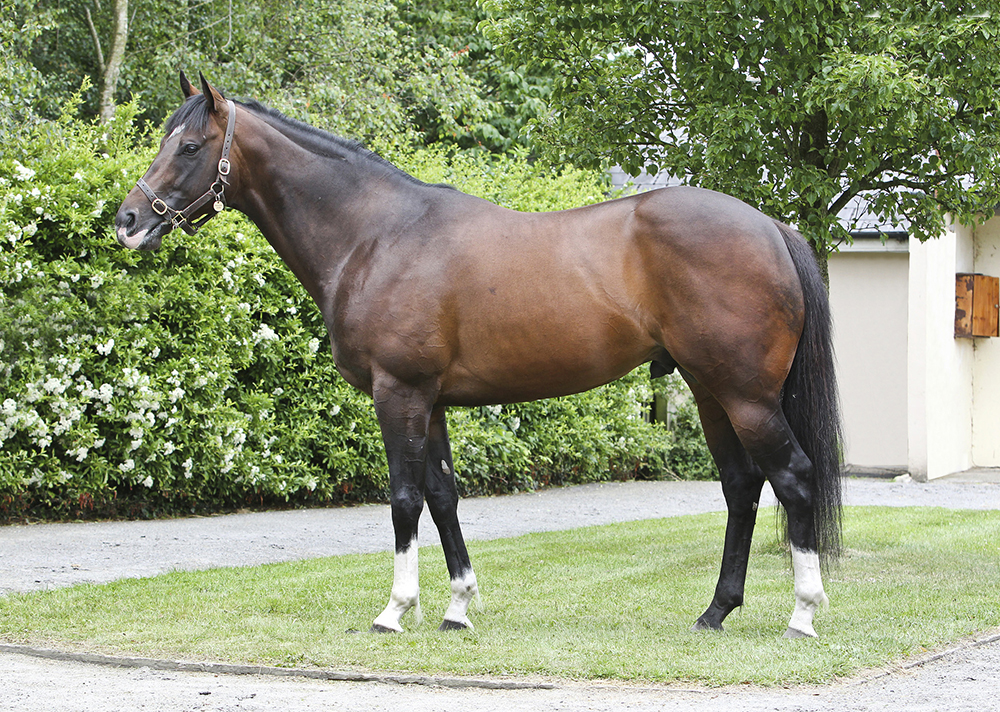
Elzaam’s progeny take more time to come to hand than Dandy Man’s but his stock have a good resale value.
Daragh: Tell us about Elzaam.
Joe: He’s a different sire to Dandy Man. He’s in a different category and they’re not as precocious, not as speedy. Strangely for a horse that was second in the Coventry, his progeny take a little bit more time, but that allows them to be good second part of the season performers as two-year-olds.
There’s a lot of racing all around the world and not all of it is precocious sprint racing. The bloodstock business isn’t all about precocious speed. Those horses that stay a mile, or ten furlongs, or further, they all have a lot of value, a lot of resale value around the world, and that’s the bracket that Elzaam’s fall into. Hence a lot of his stock in training have made good money, particularly in Hong Kong following the success of Playa del Puente.
He’s always stood at a low fee and had a cult following. He’s been very popular this year and last, and has strong books coming through after the successes he enjoyed from a low level. The likes of Champers Elysees, Waitingfortheday, Limiti Di Greccio, they’re all horses with high-class ability, bred from mares down the chain a little bit. So he has a proven ability at this stage to upgrade his mares. His horses have made loads of money all over the world, so people keep re-investing in him. He has a lot of mares in foal this year so he looks like a horse that can continue to improve his record.
He’s also a horse that provides intelligent breeders with a beautiful pedigree, being out of a Kingmambo mare and by Redoute’s Choice, an outstanding sire of stallions including Scissor Kick who stood in Australia (where he sired last month’s Everest winner, Giga Kick) and France, before moving on to Tunisia. He seems to have done what Elzaam has done with us.
The interesting thing about Elzaam is that his fourth dam is Hurry Harriet, who was the famous mare that was raised around here and trained here by the great Paddy Mullins. After being a superstar racehorse she went to America. Some of her progeny went to Australia, and her great-great grandson came from Australia back to Leighlinbridge.
Daragh: So it’s full circle.
Joe: It’s full circle! And Emmet Mullins, the grandson of Paddy Mullins, bred a mare to Elzaam three years ago and she had a two-year-old filly (Thebestisyettobe). He won with her first time out in Gowran, our local track, and promptly sold her to America. So it’s great to see the Mullins family still winning from the Hurry Harriet family.
Daragh: Tell us about Prince Of Lir.
Joe: He has come up with a couple of very smart horses this year from small numbers, Prince Of Pillo being one for Middleham Park. Gordon Bennett is a very progressive sprinter here for Dick Brabazon. He’s a horse that has never garnered the respect of breeders really. He’s been working from smaller numbers than most, but keeps providing some good horses and statistically, he’s a very good stallion. It was nice his stock being in better demand recently, one got €300,000 at the Goffs Orby Yearling Sale, so he’s proving to people that he’s there and worth supporting in the future.
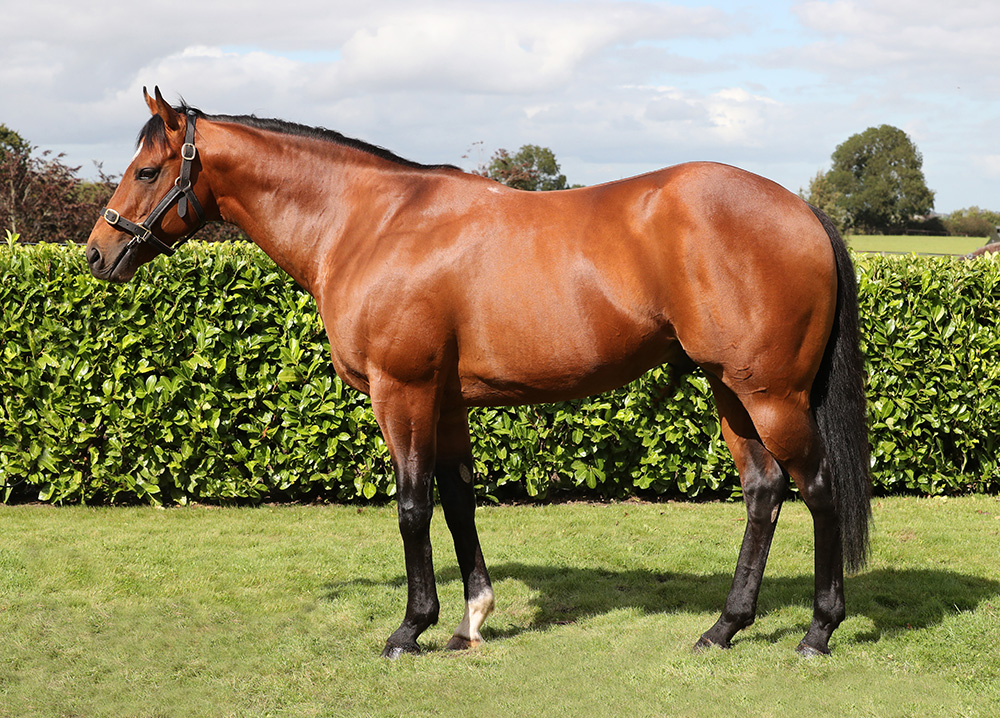
Prince of Lir stands at a low fee but has shown himself capable of breeding a good one.
Daragh: How long are you loyal to a slow-burning stallion like that?
Joe: You’ve to be very objective. From the start, when you get married to a stallion, you’re hoping they’re going to be good and it’s important to realise that when the relationship breaks down and he isn’t, you must move him on.
But Prince of Lir had The Lir Jet in his first crop, a Norfolk winner, that’s a very tough thing to do. He showed in that first crop what he can do… and he’s done it again with Prince of Pillo and some other nice horses too. So he’s a sire that stands at a low fee but is perfectly capable of breeding a good one. Interestingly, the breeze-up guys are very hot on him because he keeps breeding fast, precocious two-year-olds, which suits their market.
Daragh: Sands of Mali had his first crop of foals this year. What’s your feeling with him?
Joe: He’s a typical example of what I was referring to earlier. He’s a superior racehorse and I remember seeing him win the Gimcrack, where he beat two of ours and he was very impressive. I had seen him win his novice too and he beat one of ours in that as well! We had horses with Richard Fahey, so I knew how highly regarded he was as a two-year-old and he trained on to become a really high-class sprinter at three.
He was very unlucky not to win the Commonwealth but he did win the Group 1 British Champions Sprint. Having won the Sandy Lane as well, and the Gimcrack at two, he proved in front of everyone that he was a racehorse of the highest calibre. He is a very good-looking horse; he’s got a great conformation, a great swagger to him and great movement. Importantly, he’s also got a great temperament.
But he was this horse that didn’t have the fashion police pedigree. His sire line, people were unfamiliar with. He’s actually by a sire that I have regard for called Panis who stood, a bit like Elzaam, in the south of France and kept outproducing himself. He in turn is by Miswaki, who’s by Mr Prospector. That’s a sire line that I have the utmost admiration for.
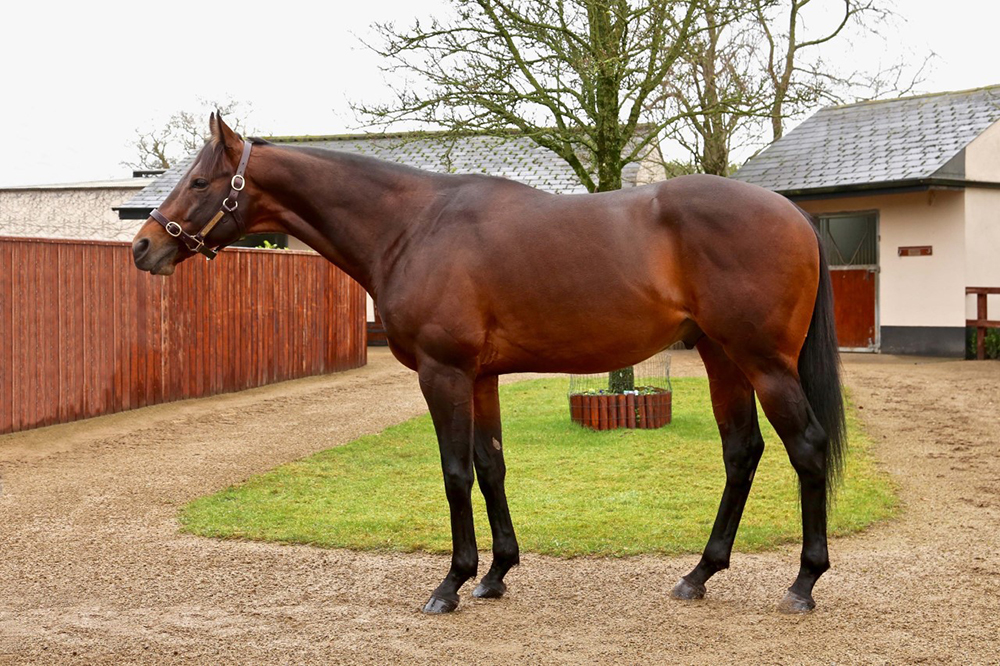
Group 1 British Champions Sprint Stakes winner, Sands of Mali, who has his first crop foals in 2022.
Sands of Mali provides very interesting pedigree and mating possibilities for people who are into that game. He’s possibly one of the most direct access points to Mr Prospector in Europe. With his conformation and temperament, and with his high-class racing ability, I think he’s a perfect example of a horse that could be anything. His foals are very accurate; they’re in his own mould, they’ve got big, strong backends on them with loads of action, a great temperament like himself, so we’d be happy with the early indicators.
New advertised stallions for 2025
Click on any of the new stallions below to go straight to their records

Click below to buy the 2025 book.
Why Advertise Your Stallion
Each Advertised Stallion comprises:
An Overview • Stud Record • Sales Record • Race Record • Pedigree Record
